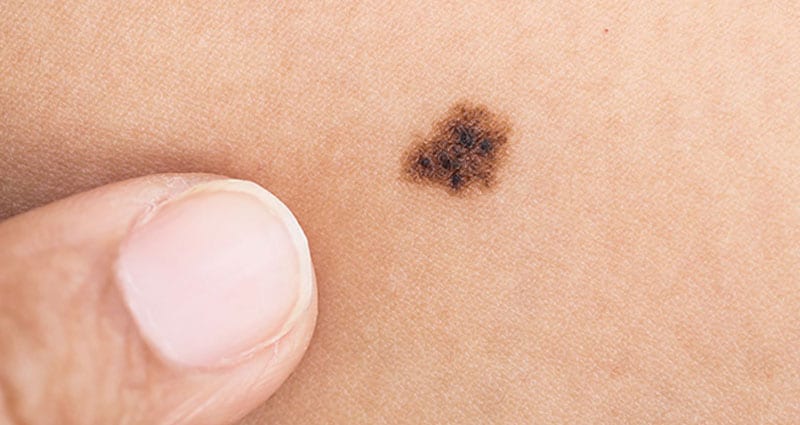I was recently diagnosed with a “pre-melanoma” on my leg.
It all started when I noticed a mole on my left leg had changed. My colleague removed a part of the mole and sent it off for tests. The results indicated that my mole was “melanoma in situ,” which means the malignant tumor was still confined to the upper layers of the skin and had not spread. A second excision was performed to remove the mole entirely, and there’s no reason to believe that I won’t be fine.
Had I not noticed the change in the mole, it may have become a malignant melanoma, and my situation could have been dramatically different.
Malignant melanoma, which starts out as a mole, is the most dangerous form of skin cancer, killing almost 10,000 people each year. The majority of melanomas are black or brown, but they can be almost any color; skin-colored, pink, red, purple, blue or white. Melanomas are caused mainly by intense UV exposure.
If malignant melanoma is recognized and treated early, like in my case, it is almost always curable. However, if it has time to spread to other parts of the body, it becomes very difficult to treat and can lead to death.
Identifying Malignant Melanoma
The ABCDE Criteria can help you identify moles that could be malignant melanoma. Being aware of these criteria may very well save your life.
A = Asymmetrical
If you look at a benign, or harmless, mole, it is usually symmetrical. On the other hand, a worrisome mole is asymmetrical, meaning if you cut in half, the two sides do not look the same.
B = Border
Benign moles typically have a regular, round border. Cancerous moles tend to have irregular borders. If the border isn’t smooth, you should get your mole checked out.
C = Color
Benign moles are usually one uniform color throughout. They can be brown, or black or pink, as long as they are one single color. Cancerous or pre-cancerous moles are multicolored. If the mole has more than one color, get it looked at.
D = Diameter
Imagine a pencil eraser. Moles smaller than the diameter of a pencil eraser are less likely to be cancer. If a mole is bigger than a pencil eraser, it is not necessarily cancerous, but it should be evaluated.
E = Evolving
The ABCD above is very important. However, if any mole on your skin shows signs of change, that can indicate a problem. A change in size or color for example might be the only sign that it is cancerous.
More Useful Information About Protecting Your Skin
Why You Should See a Dermatologist
Get Ready for Spring Activities—And All That Sun, Too
Schedule an appointment with one of our primary care providers to find out about screenings and skin cancer prevention.
About Dr. Chastain
Curtis C. Chastain, MD, FACP, is an internal medicine physician focused on the primary care of men. He is a thought leader and frequently requested expert on men’s health, bringing his personal insights and 25 years of practice experience to this topic. Dr. Chastain is the founder and medical director of the Men’s Health Center at Our Lady of the Lake Regional Medical Center. To learn more about becoming a member of the Men’s Health Center, call 225-765-4400.




